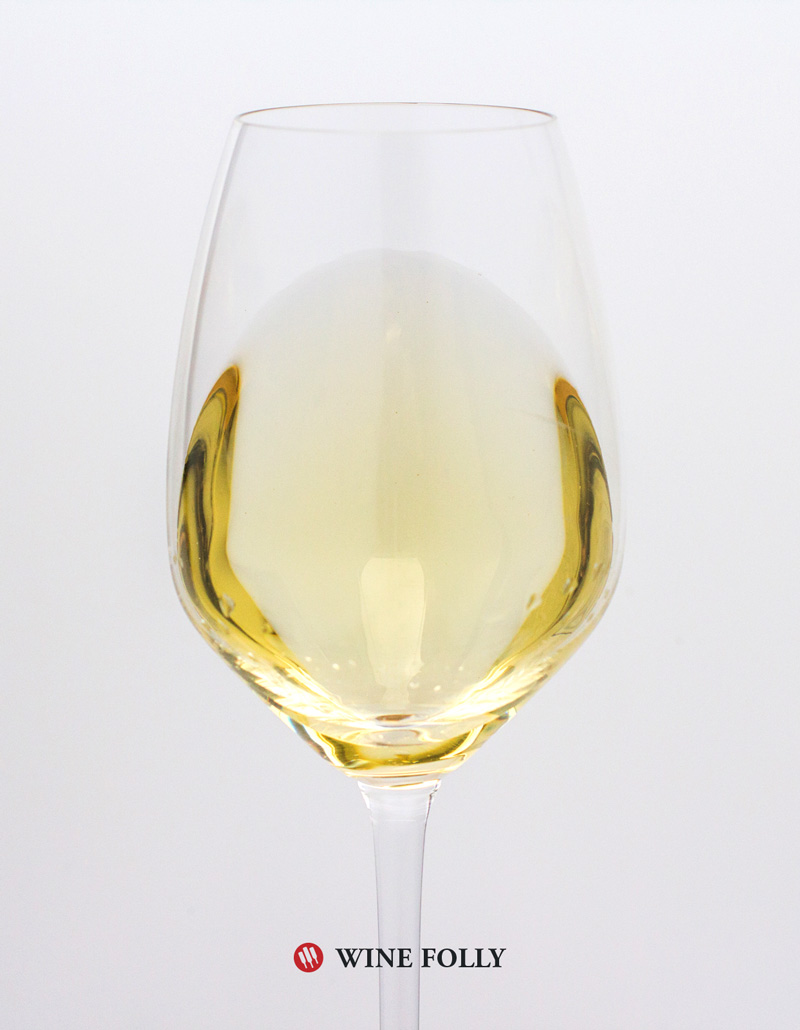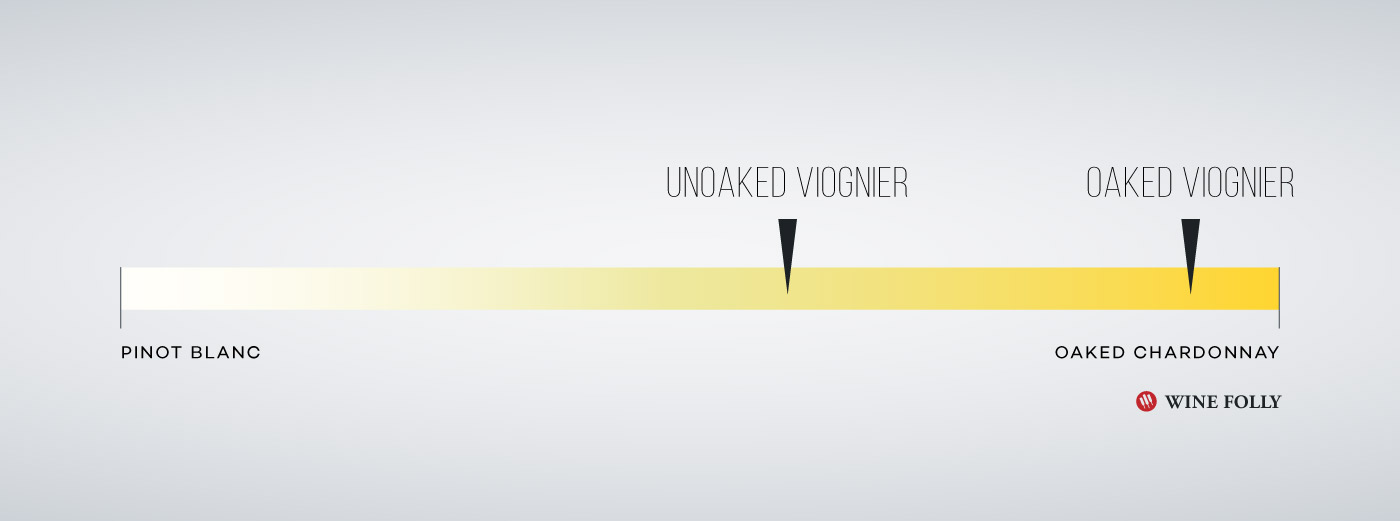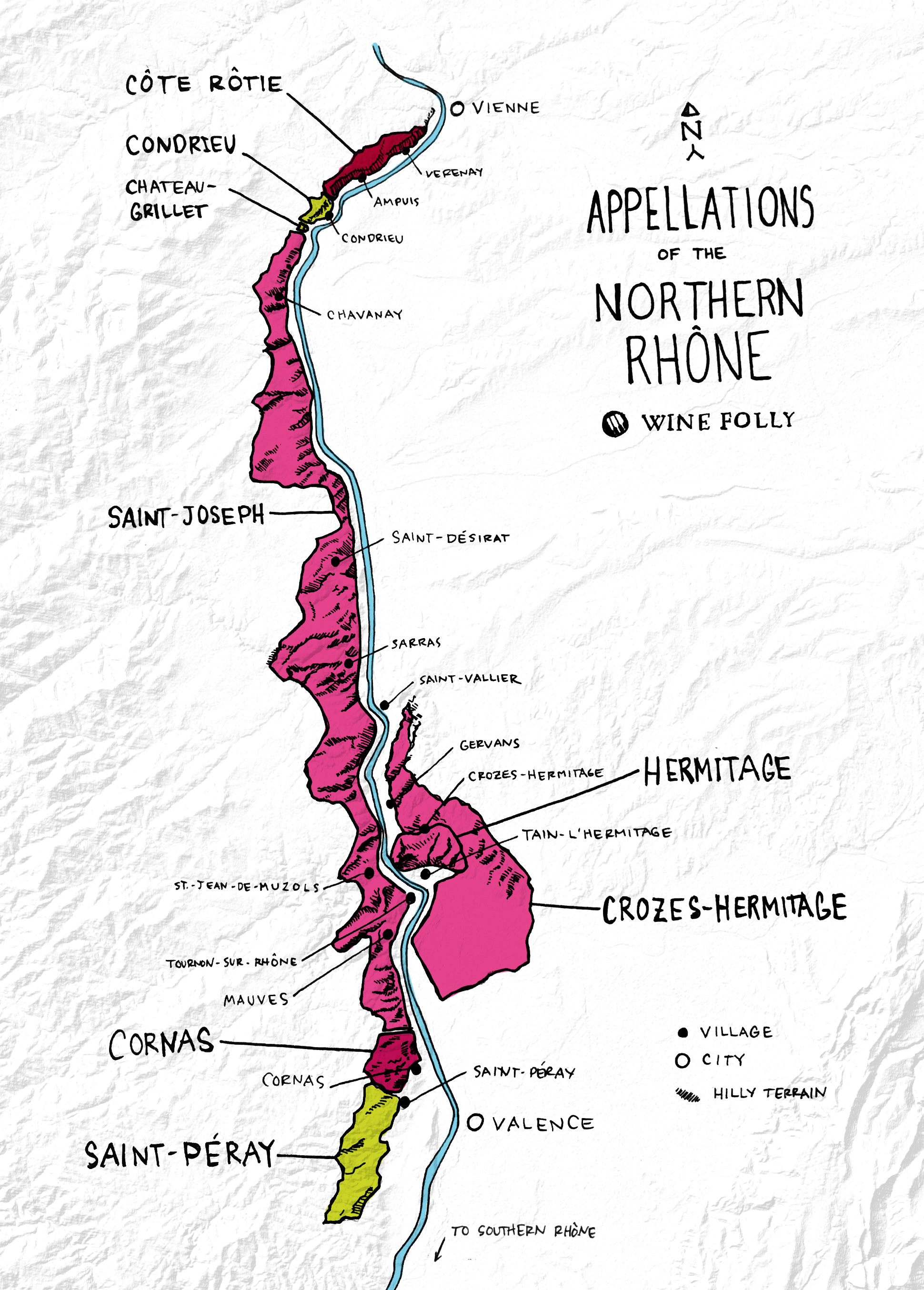Also known as: Galopine
Table of Contents
Primary Flavors
- Tangerine
- Peach
- Mango
- Honeysuckle
- Rose
Taste Profile
On the nose, Viognier is a very aromatic wine with rich aromas of tangerine, mango, honeysuckle, rose, and peach. Oaked versions will also have subtle vanilla and smoke aromas.
On the palate, Viognier is quite viscous and full-bodied. If you like full-bodied Chardonnay, you’ll probably like Viognier. Despite smelling sweet, Viognier is typically dry.
How to Serve Viognier Wine
Serve Viognier chilled in a white wine glass. It doesn’t need decanting to accentuate its aromatic qualities. A white wine glass will funnel those intense aromas directly into your nose.

SERVE
45–55°F / 7-12°C
GLASS TYPE
White
DECANT
No
CELLAR
3-5 Years
Viognier Food Pairing
A wine best paired with delicate meats or scallops that are flavored with stewed fruit, almonds, citrus, or aromatic
herbs (such as Thai basil or tarragon).
Try chicken tagine with apricots and almonds served over saffron rice. The aromas in the dish should heighten the fruit flavors and creaminess in the wine.

5 Fun Facts About Viognier
- Viognier is originally from the Northern Rhône.
- France has the most amount of Viognier in the world.
- Viognier is often blended with Syrah to add complexity and stabilize Syrah’s color.
- Viognier can be crafted into a wide range of styles, from light to full-bodied.
- Viognier has low yields and is challenging to cultivate. In fact, it almost went extinct in the 1980s.

Where It Grows
With almost 40,000 acres planted throughout the world, Viognier is a somewhat common wine grape. You’ll find most vineyards in France, the USA, and Italy.
- France: 21,802 acres (8,823 hectares)
- Italy: 4,514 acres (1,827 hectares)
- USA: 3,659 acres (1,481 hectares))
- Chile: 2,073 acres (839 hectares)
- South Africa: 2,031 acres (822 hectares)
- Argentina: 1,910 acres (773 hectares)
- Australia: 1,860 acres (753 hectares)
- Others: 1,840 acres (745 hectares)
Total Vineyard Area – 39,692 acres (16,063 hectares) (Source: University of Adelaide, 2021)
France
What to expect: Full-bodied, oily, and viscous with ripe peach and floral notes and subtle toast and vanilla aromas from oak.
Viognier in France is primarily found in the Northern Rhône and specifically in Condrieu, where wines from this appellation must be 100% of the grape. However elsewhere in the Northern Rhône, it can be blended, mainly with Syrah. In Côte-Rôtie, a red wine appellation, up to 20% of Viognier can be added as it helps stabilize Syrah’s color and adds a floral aroma.
There is one other appellation in the Northern Rhône that has 100% Viognier wines and that’s Château-Grillet. This tiny single-producer appellation consists of just one producer, Neyret-Gachet, who releases just 10,000 bottles each year.

United States
What to expect: A range of dry styles from full-bodied and oaked to leaner more mineral styles with high levels of acid.
In the United States, there are a few areas that have started to specialize in Viognier. Virginia and Paso Robles both have excellent examples. Styles can follow the Condrieu style from France which will be oaked, full-bodied, and oily, or you can also find leaner styles that are unoaked and focus on the fruit and aromatic purity of the grape.
The vast majority of Viognier wines from the United States will be dry.
In-Depth Knowledge
Due to its unique characteristics, Viognier requires specific viticultural and winemaking techniques to maximize its potential.
For instance, the grape thrives in hot and dry climates and requires careful irrigation and pruning to manage its low yields.
Additionally, it’s susceptible to diseases, and growers need to implement appropriate vineyard management practices to prevent infection.
Winemaker’s Secrets to Viognier
Winemakers often use oak barrels for aging Viognier to enhance its complexity and add vanilla, caramel, and toasty flavors to the wine. The fermentation temperature of Viognier is a critical factor in winemaking. The ideal temperature range for fermentation is 18 to 22°C to preserve the grape’s fruity and floral flavors.
Additionally, extended skin contact and lees stirring during the winemaking process can add aromatics, complexity, and richness to the wine.
Why Is Viognier So Aromatic?
Viognier is famous for its unique aroma, which is a combination of floral and fruity notes. The primary chemical compounds responsible for these aromas are terpenes and esters.
Terpenes are found in the grape skins and contribute to the floral aromas including:
Esters which are formed during fermentation, are responsible for the fruity aromas and include:
Other compounds, such as β-damascenone and 1,1,6-trimethyl-1,2-dihydronaphthalene, also contribute to the complex aromas of Viognier.